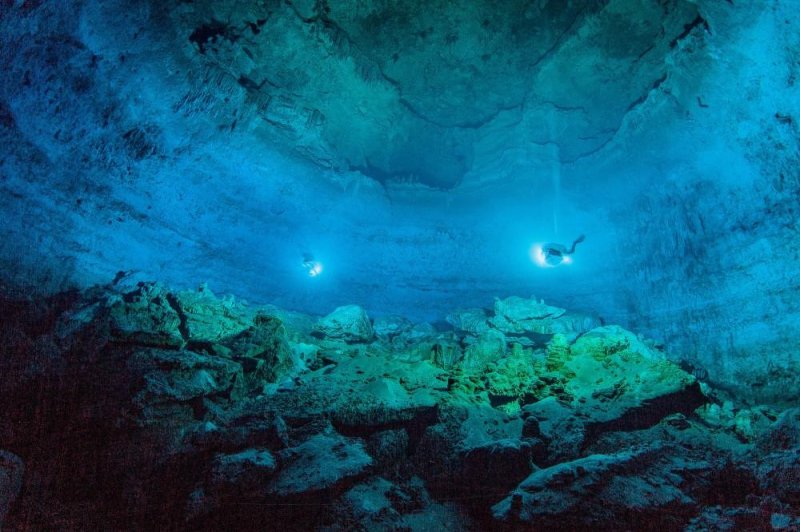Divers explore the underwater cave where Naia's skull was found. (Roberto Chavez Arce)
MERIDA, Mexico, May 16 (UPI) -- Archaeologists say they've found the oldest skull and skeleton in the Americas, and it's evidence that Native Americans -- whether modern or ancient -- trace their lineage to a single migration of people across the land bridge that once connected North America and Asia.
It's the skull of a 16-year-old girl, dubbed Naia, who some 13,000 years ago fell into a deep cave on the Yucatan Peninsula while fetching water. Since flooded by rising sea levels, the underground layer is now called the Outland Cave and is part of a vast network called the Sac Actun cave system -- one of the largest underwater cave systems ever surveyed.
In 2007, divers exploring the system came upon a giant underwater chamber full of fossils -- including the bones of saber-toothed tigers, giant ground sloths, and other Ice Age mammals. They also found the skeleton of Naia.
"It was a small cranium laying upside down with a perfect set of teeth and dark eye sockets looking back at us," Alberto Nava, one of the divers, recalled.
Little did Nava or the the divers know, the perfectly preserved skeleton would help solve a migration mystery.
For a long time, archaeologists and anthropologists have remained puzzled by the appearance of modern Native Americans, whose facial structure most closely resembles the peoples of China, Korea or Japan. Meanwhile, the skulls of ancient Americans, often referred to as Paleoamericans, are narrower and more forward-projecting, recalling the native peoples of Africa, Australia, and the southern Pacific Rim.
The discrepancy lead some scientists to surmise that the Americas were populated by two separate migrations, first by people hailing from Polynesia or western Asia and later by people from East Asia.
But the skeleton, and a new study, offer some clarity. Naia's skull features facial characteristics of ancient Americans and the DNA lineage of modern Native Americans -- a lineage that traces to Beringia, the ancient region of grassland steppe that connected modern-day Alaska with Siberia during the last ice age. Lead archaeologist James Chatters says it's proof that both sets of Native Americans originate from the same place.
But although the new study -- published this week in the journal Science -- settles the problem of Native American migration, questions remain.
As Rasmus Nielsen, a geneticist at the University of California, Berkeley, explained to USA Today: "It's interesting, because it raises a new question: Why are there (skull and facial) changes? Is it really true that Native Americans have evolved ... in such a short amount of time?"















